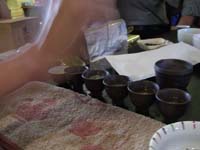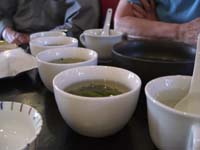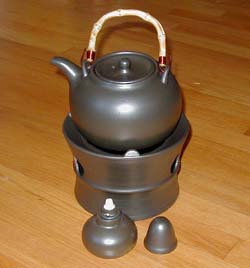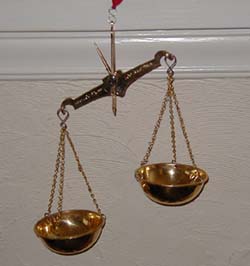Well, as I mentioned in the recent Tea Geek newsletter (which you can sign up for here), I mentioned that Saturday was my last day at the Perennial Tea Room. We’ve parted on good terms, and I’ll still be doing classes there. However, that leaves me free to do more with Tea Geek.
Part of this love-fest of newness, is a new kind of entry that I hope to have every so often on this blog. I’m going to do an occasional series of interviews of people in the tea world. And, since the most popular post on my blog is the one about Aaron’s tea tasting (and because he was the first to respond to my requests for an interview), I’ve included the interview with Aaron Armstrong of Team Tea below:
TG: What’s your favorite tea?
AA: The worst tea I can find. The more bad tea I try, the more I appreciate a good one.
TG: How did you start on the path to tea geekdom? Briefly describe your history of tea exploration.
AA: I have always enjoyed tea, but didn’t always know what it was. I began truly enjoying tea after I was introduced to a tea ceremony master in Japan. One of the kindest, most gracious, most generous people I have ever met. Tea isn’t about flavor or aroma, it is about who you drink it with. Well, I guess after that it is about flavor and aroma, but only then (^^).
TG: What aspect of tea do you find most fascinating?
AA: The shear enormity of it. One silly plant and so many varied delicious teas.
TG: Who have you learned the most from?
AA: I have had help from many. This is a difficult question, because each person has something different to share.
TG: What tea resource (book, website, person, etc.) would you recommend for a tea novice?
AA: Floating Leaves Tea in Seattle, Washington
TG: And what’s your own favorite tea resource, potentially for more advanced tea geeks?
AA: The tea.
TG: What does tea mean to you?
AA: It is what one puts into it. It can be a flavor, a feeling, a person, a community. To me it is friends enjoying one another’s company.
TG: Name your biggest pet peeve in the realm of tea and tea drinking.
AA: That some people think that there is a “RIGHT” way to drink tea. There is a wrong way, but there is no right way.
TG: If you could let everyone in the world know or understand one thing about tea, what would it be?
AA: It is just a beverage.
TG: What’s the craziest/weirdest/most obsessive thing you’ve ever done in pursuit of your love of tea?
AA: I carried a cast iron Furou (the cauldron and fire pit set for preparing
maccha) on the plane back from Japan? Is that crazy? It was quite heavy…
Thanks, Aaron!












 My other new toy is a pre-weighted tea balance. Tea professionals often use scales like this to weigh out the perfect amount of tea for the standard brewing cup (it’s an item I like to call the “toothy cup” because the edge has a serrated section that allows you to strain the tea between cup and lid).
My other new toy is a pre-weighted tea balance. Tea professionals often use scales like this to weigh out the perfect amount of tea for the standard brewing cup (it’s an item I like to call the “toothy cup” because the edge has a serrated section that allows you to strain the tea between cup and lid).